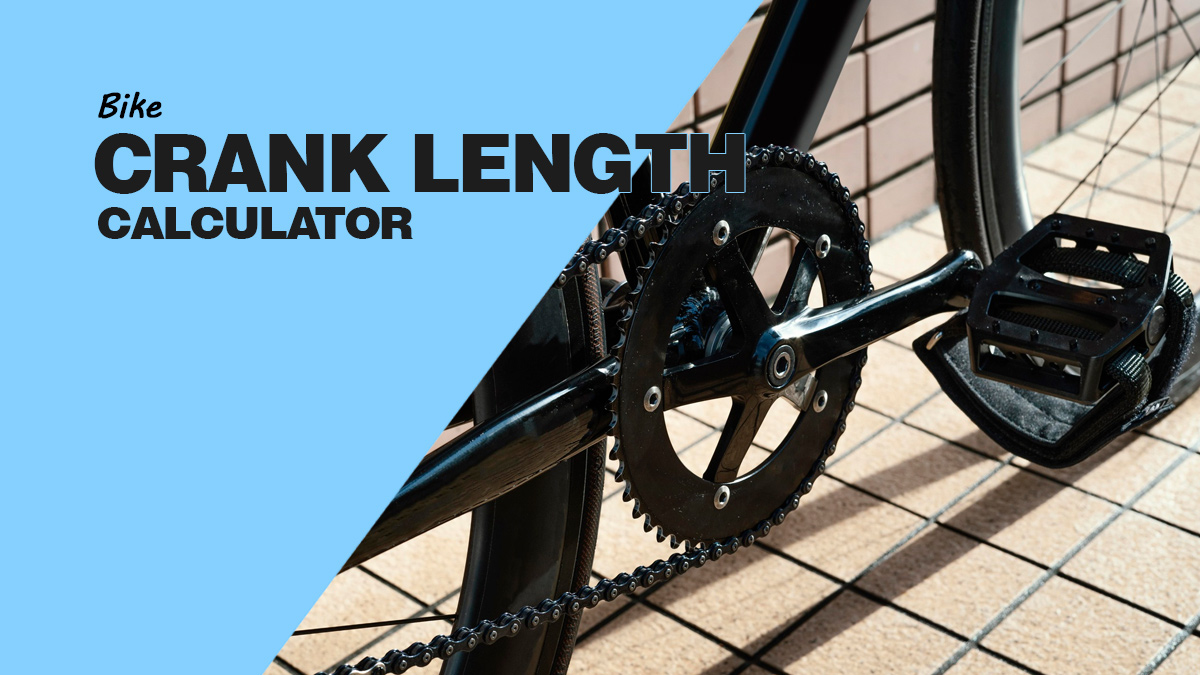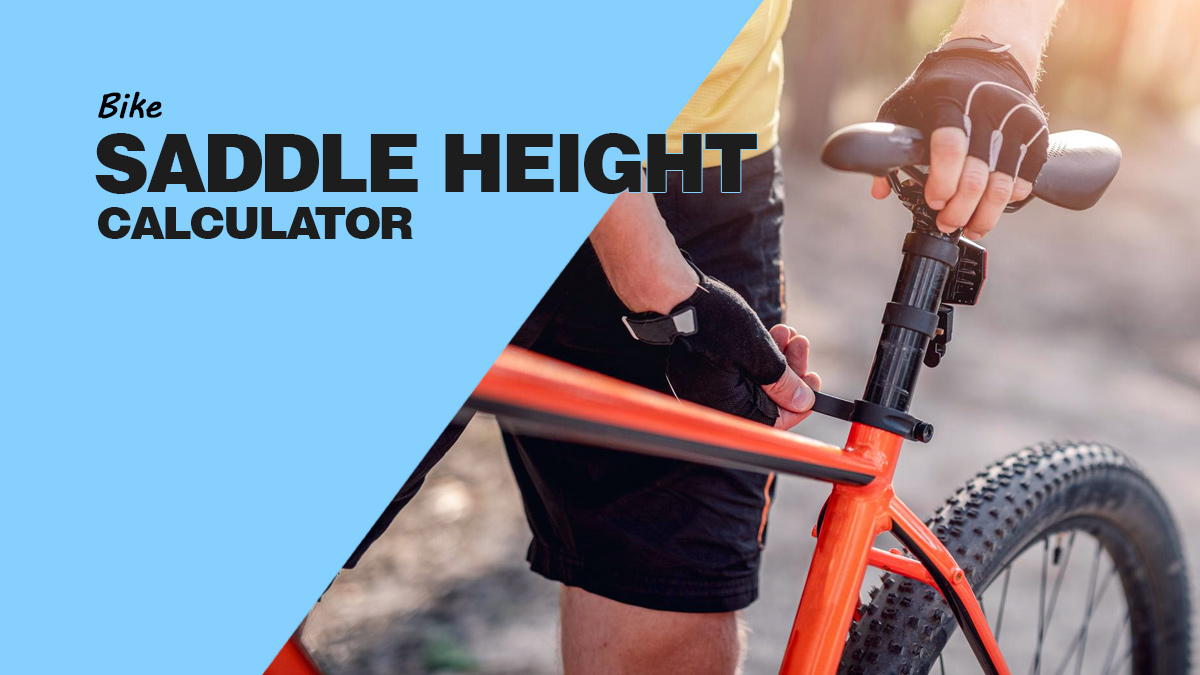Bicycle Gear Inches Chart
Cycling enthusiasts, whether they’re seasoned pros or just starting out, often find themselves pondering the complexities of gear ratios and how they impact their ride. If you’ve ever been curious about gear chart and how to optimize your bike’s performance, you’re in the right place!
In this article, we’ll explore the Bicycle Gear Inches Calculator—a handy tool that helps you understand gear ratios and make informed decisions about your bike setup. We’ll break down how the gear inch calculator really works, how to use it, and how to interpret the results. So, let’s get started!
What is the Bicycle Gear Inches Calculator?
The Bicycle Gear Inches Calculator is a user-friendly tool that allows cyclists to calculate gear inches—a measure of mechanical advantage in a bike’s gearing and drivetrain. Gear inches provide insight into how hard or easy it is to pedal at different gear combinations. By understanding gear inches, you can optimize your bike setup for various terrains mountain bikes, and riding styles.
The formula for calculating gear inches is as follows:
Gear Inches = (Chainring Teeth / Cog Teeth) * Wheel Diameter (in inches)
In this formula:
- Chainring Teeth refers to the number of teeth on the front chainring (attached to the pedals).
- Cog Teeth refers to the number of teeth on the rear cog (attached to the rear wheel).
- Wheel Diameter is the total diameter of the wheel, including the tire.
Calculate your bike gear ratio for your fixed gear bike. Use our free calculator now.
How to Use the Bicycle Gear Inches Calculator
Using the Bicycle Gear Inches Calculator is simple and straightforward. Here’s how:
Step 1: Select the Rim Size
Choose the size of your bike’s rim from the drop-down menu. Rim sizes are listed in both inches and millimeters for your convenience.
Step 2: Select the Tire Size
Choose the width of your bike’s tire from the drop-down menu. Tire sizes are listed in millimeters.
Step 3: Input the Chainring Range
Select the minimum and maximum number of teeth on your bike’s front chainring(s).
Step 4: Input the Cog Range
Select the minimum and maximum number of teeth on your bike’s rear cog(s).
Step 5: Click “Calculate”
Once you’ve input all the necessary information, click the “Calculate” button to generate a table of gear inches for various gear combinations.
Find your perfect bike frame size today and ride comfortably! Use our free bike frame size calculator now.
Tips for Using the Bicycle Gear Inches Calculator
Here are a few tips to keep in mind:
1. Consider Your Riding Goals
Think about the type of riding you plan to do. Are you aiming for high-speed road cycling, tackling challenging mountain trails, or simply commuting to work? Your riding goals will influence the gear combinations you choose.
2. Experiment with Different Gear Ratios
Don’t be afraid to try out different gear combinations on your bike. Experimenting with various chainring and cog sizes will help you find the gear ratios that suit your riding style and terrain.
- Get the best gear ratio for your bike with our free gear ratio chart.
- Explore our comprehensive guide to use and shift bike gears for a seamless riding experience.
3. Pay Attention to Cadence
Cadence refers to the number of pedal revolutions per minute (RPM). A higher gear inch value may result in a lower cadence, requiring more force to pedal but achieving higher speeds. Conversely, a lower gear inch value may result in a higher cadence, allowing for easier pedaling but at lower speeds. Finding the right balance between gear inches and cadence is key to efficient cycling.
Improve your cycling experience with our long distance cycling guide.
4. Factor in Your Fitness Level
Your physical fitness level plays a role in how comfortable you’ll be with different gear combinations. If you’re new to cycling or working on building your fitness, you may prefer lower gear inches for easier pedaling. As your strength and endurance improve, you can experiment with higher gear inches for greater speed.
Find out how many skid patches your fixed gear bike has with our skid patch free calculator. Try it now!
5. Remember That Comfort Matters
Ultimately, the best gear combination is the one that feels comfortable and enjoyable for you. Pay attention to how your body feels while cycling, and make adjustments as needed to ensure a positive riding experience.
Understanding the Results
The results are presented in a table that shows gear inches for different combinations of chainring and cog sizes. Each cell in the table represents gear chart a specific, rear cog, and gear ratio combination, with the chainring size listed horizontally and the cog size listed vertically.
The table is color-coded to help you quickly identify gear combinations that are easy to pedal (green), moderately challenging (blue), or difficult (red). Here’s what the colors mean:
- Green (80+ gear inches): These gear combinations provide a high mechanical advantage, making them suitable for high-speed riding on flat terrain.
- Blue (50-80 gear inches): These gear combinations strike a balance between speed and effort, making them versatile for varied terrain.
- Red (below 50 gear inches): These gear combinations provide a low mechanical advantage, making them ideal for climbing steep hills or riding off-road.
Remember the ideal gear inches for you will depend on your fitness level, riding style, and the terrain you’re tackling. I recommend experiment with different gear combinations to find what works best for you!
Get the most out of your bike’s performance with our free bike gear ratio calculator. Try it now!
FAQs
How do you calculate bike gears in inches?
(Channing Teeth / Disc Teeth) x FrontWheel Dimension / Wheel & Tire : Gears are helpful because they have numerical values which are given to each configuration in order to compare the others.
How many inches is a 64x15 gear?
Gears: 115×64 inches.
What does bike gear inches mean?
Gear inches represents the actual dimensions wheel diameter of the wheel in inches for an electric bike with similar gear.
How do you calculate gear range?
The cassette is divided into gears by its largest cogs and the small cogs. It therefore makes up 42/10 = 4.20 = 420 percent. When you figure out how much gear you’re using in your cassettes, even a small change in the smallest gear can be very useful.
- Solve the mystery of unresponsive gears! Explore our guide on why your bike won’t shift gears.
Final Thoughts
The Bicycle Gear Inches Calculator is a powerful tool that empowers cyclists to make informed decisions about their bike setup. By using gear calculator and understanding the concept of gear ratio in inches and how it impacts your ride, you can customize your bike to meet your unique riding goals and preferences.
Whether you’re gearing your gears up for a competitive race, embarking on a scenic bike tour, or simply enjoying a leisurely ride around the neighborhood, the Bicycle Gear Inches Calculator is your go-to resource for your gears and optimizing your cycling experience.
So, grab your helmet, hop on your bike, and let the Bicycle Gear Inches Calculator guide you on your journey to cycling success. Happy trails and safe riding!
More Bike Related Calculators:
- Bike Size Calculator
- Bike Gear Ratio Calculator and Charts
- Skid Patch Calculator
- Fixed Gear Calculator: Bike Gear Calculator
- Bicycle Gear Ratio Dynamic Chart
Should you have any questions or require further clarification on the topic, please feel free to connect with our expert author Jerry O by leaving a comment below. We value your engagement and are here to assist you.








